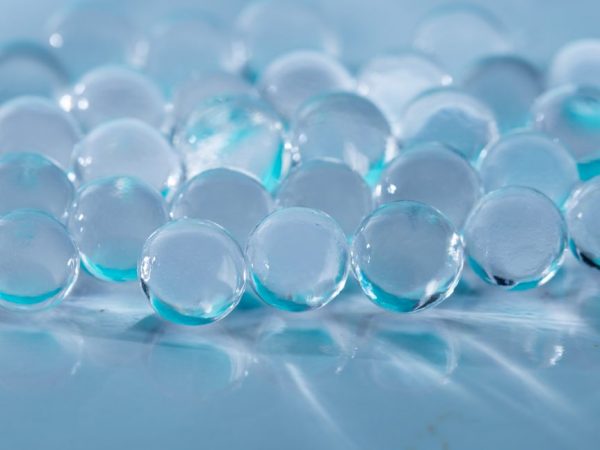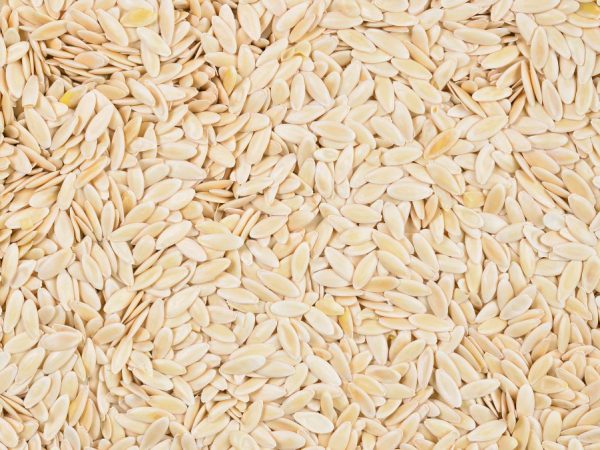Cucumbers in hydrogel
Hydrogel is a new class of substances that can hold large amounts of moisture with nutrients dissolved in it. More than 95% of the accumulated liquid is given to the seedlings by the material. Recently, it has been actively used in agriculture for the cultivation of various plants, in particular, cucumbers in a hydrogel are especially popular.

Cucumbers in hydrogel
What is a hydrogel for?
Cucumbers are a crop that requires constant watering. The moisture-containing mixture is ideal for the root system of the plant during all growing periods. Mineral fertilizers and water accumulated in the polymers will flow to the sprouts as needed, providing them with nutrition. Cucumber hydrogel can reduce watering resources by up to 20%.
The drug does not harm the earth and the environment.
Technology advantages
- Cucumbers grown in hydrogel do not taste bitter.
- The volumes of liquid absorbed by the hydrogel can be 300 times the weight of the polymers themselves, which indicates its effectiveness.
- Seeds sprout much faster than in normal soil.
- Seeds and roots are aerated.
- All useful microelements are not washed out during watering.
- Only 0.8-1.6 g of hydrogel is consumed per 1 liter of soil.
- Prevention of drying out of the top layer of the soil, and, accordingly, its cracking. Thanks to this, the seedlings do not require constant loosening and hilling.
- Plants in the hydrogel are less sick and do not require frequent attention.
- In case of an accidental excess of moisture (frequent watering, during showers and rains), polymers absorb excess liquid, thereby maintaining optimal growth conditions for seedlings.
How to use hydrogel when planting
Method number 1

Follow the recommendations
The seeds are lowered into a previously prepared mass, which looks like a jelly or thick gel in appearance. To prepare the material, the contents of the package are poured with water and, if necessary, fertilizers are added. The resulting mixture is rubbed through a sieve or crushed using a blender.
Next, the prepared hydrogel layer is placed in the container for planting. The thickness should not exceed 3 cm. After that, the seeds are spread on top of it. It is not recommended to deepen the seeds of cucumbers: they remain without oxygen access, and this negatively affects the growth period.
To ensure a microclimate, boxes with planting material are covered with foil. During the day, you must open the film at least once in order to let in fresh air and remove condensation.
Method number 2
The soil prepared for planting seeds is mixed with the hydrogel in a 3: 1 or 4: 1 ratio. The resulting composition is poured into a container for seedlings. The use of this method gives the result no worse than the previous one.
Both dry and swollen polymer material can be mixed with earth. It should be remembered that polymers increase in size 250-300 times, therefore, a sufficient amount of space must be left in the hole or container.After the first watering, you need to press down well and compact the soil around the plant so that the acquired volume of hydrogel does not squeeze the sprouts or seeds out.
Method number 3
These are combined landing activities. Seedlings grown in a swollen hydrogel are transplanted into a soil hole so that the maximum amount of polymer remains around the roots: this will help the seedlings take root well, reduce stress and retain the necessary moisture for a long time.
The granules cannot be reused. The material loses its properties: it darkens, wrinkles, bacteria grow inside.
Conclusion
Hydrogel for planting cucumbers is an environmentally friendly material. It not only retains the necessary moisture, accelerates the ascent of seeds and enhances the growth of seedlings, but also has a positive effect on the composition and quality of the soil. By planting cucumbers with its use and providing careful care throughout the growing season, you will be able to harvest a good harvest.


